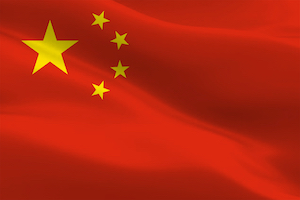 A November White House Executive Order banning investment in companies that finance Chinese military companies could trigger some changes in retirement plan investments—beginning next week.
A November White House Executive Order banning investment in companies that finance Chinese military companies could trigger some changes in retirement plan investments—beginning next week.
The Nov. 12 Executive Order signed by President Trump banned U.S. citizens from engaging in transactions in publicly traded securities of certain Communist Chinese military companies (CCMCs) or any securities that are derivative of or designed to provide investment exposure to such securities, effective Jan. 11, 2021, at 9:30 a.m. EST.
Essentially, this means that, beginning on Jan, 11, 2021, U.S. investors will no longer be able to transact in publicly traded or private market debt or equity securities, or any securities that are derivative thereof, regardless of the percentage ownership of CCMCs, with full divestment of investments before that date required by Nov. 11, 2021. This would, of course, include mutual funds, managed accounts, exchange-traded funds (ETFs), etc.
Why It Matters
On its face, the Executive Order appears non-controversial enough. However, that was followed on Dec. 28 by guidance[i] from Secretary of State Mike Pompeo that clarified the breadth of the prohibitions.
A fact sheet subsequently published by the State Department in early December noted that as of December 2020, at least 24 of the 35 parent-level CCMCs had affiliates’ securities included on a major securities index, and that the MSCI emerging market index includes 230 Chinese A-shares stocks “incorporated on the Mainland, quoted in renminbi, and listed on Chinese Communist Party-controlled Shanghai and Shenzhen exchanges.” That fact sheet also provided a list of “parent-level Communist Chinese military companies,” as well as a significantly longer list of affiliate companies and “a number of PRC firms” that have been placed on the Commerce Department’s Entity List for “engaging in or enabling activities contrary to the national security and/or foreign policy interests of the United States.”
However, as noted above, the real issue for retirement plans is likely to be found in pooled investment funds, such as target-date funds, managed accounts, and/or exchange-traded funds (ETFs), particularly those with an emerging markets exposure. In cautioning about the impact of these investments, the State Department fact sheet explains that “The Thrift Savings Plan’s governing board study revealed that a majority of pension funds use the MSCI emerging market index as their investment guide,” including:
- the 401(k)s of the 10 largest publicly traded U.S. companies;
- the top 10 federal contractors;
- the 20 largest state pension plans;
- the six largest target-date mutual-fund providers with holdings of $1.9 trillion as of June 2019;
- the Pension Benefit Guaranty Corporation (PBGC), with $131 billion in pension insurance reserves;
- numerous insurance funds; and
- numerous college and university endowment funds.
“Institutional investors and endowment managers can and should pay attention to these risks,” the fact sheet advises.
What’s Next
In a set of FAQs published this week, the Treasury Department’s Office of Foreign Assets Control clarified that “Executive Order (E.O.) 13959 does not require U.S. persons, including U.S. funds and related market intermediaries and participants, to divest their holdings in publicly traded securities (and securities that are derivative of, or are designed to provide investment exposure to, such securities) of the Communist Chinese military companies identified in the Annex to E.O. 13959 by January 11, 2021.”
It is also worth noting that under the language of the Executive Order, divestment of CCMCs is permitted until Nov. 11, 2021 but is not required, as a previous draft had indicated. (After that, or 60 days after an organization is determined to be a CCMC, any transactions are “prohibited.”) That said, there remains some question on this point—and thus plan fiduciaries will likely want to remain apprised of the approach taken with regard to plan investments.
In the days ahead, you may well receive notifications from fund companies and the like regarding this issue, and steps taken to be in compliance with the Executive Order—and plan fiduciaries should continue to monitor this situation as the divestment date nears.
[i] That guidance included:
i. a broad interpretation of the covered financial instruments to include, for instance, derivatives (futures, options, swaps), warrants, ADRs, GDRs, ETFs, index funds and mutual funds (to the extent such instruments fall within the definition of “security” under the EO);
ii. confirmation that the prohibition applies to investments in both U.S. and foreign funds that hold publicly traded securities of CCMCs, regardless of the level of such securities’ share of the underlying fund, ETF or derivative, and regardless of where the securities are traded or in which currency the securities are denominated; and
iii. a statement that the Treasury Department intends to list additional entities that are majority-owned or controlled by listed CCMCs.

